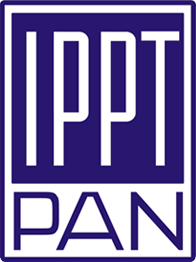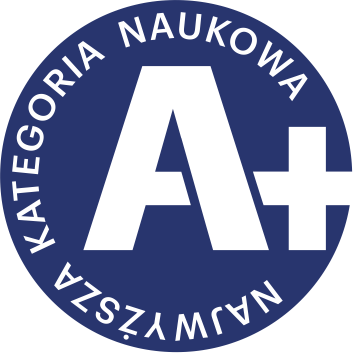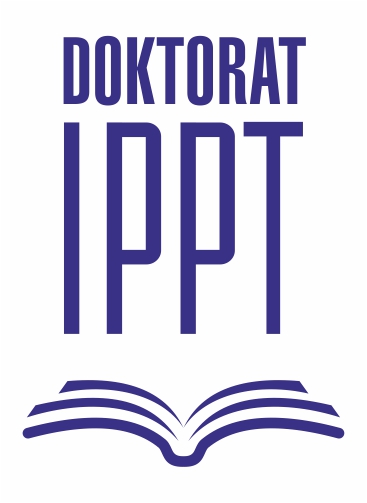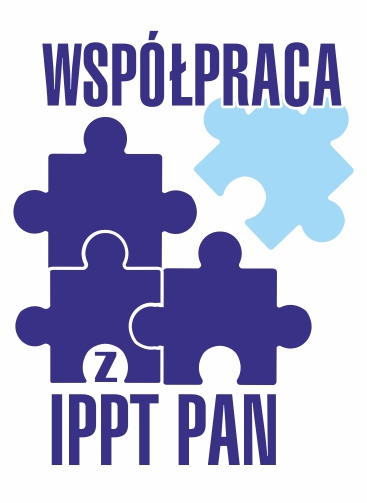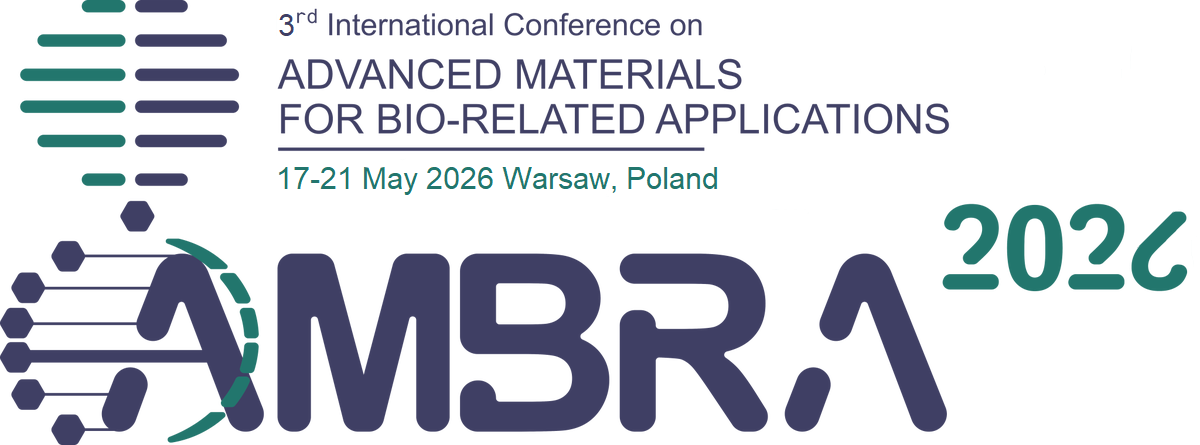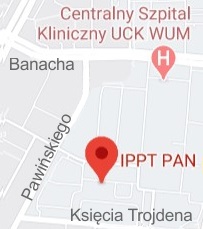| 1. |
Zaszczyńska A., Zychowicz M.♦, Kołbuk-Konieczny D., Denis P., Gradys A., Sajkiewicz P., On the Structural and Biological Effects of Hydroxyapatite and Gold Nano-Scale Particles in Poly(Vinylidene Fluoride) Smart Scaffolds for Bone and Neural Tissue Engineering,
Molecules, ISSN: 1420-3049, DOI: 10.3390/molecules30051041, Vol.30, No.5, pp.1041-1-32, 2025 Streszczenie:
Piezoelectric materials, due to their ability to generate an electric charge in response to mechanical deformation, are becoming increasingly attractive in the engineering of bone and neural tissues. This manuscript reports the effects of the addition of nanohydroxyapatite (nHA), introduction of gold nanoparticles (AuNPs) via sonochemical coating, and collector rotation speed on the formation of electroactive phases and biological properties in electrospun nanofiber scaffolds consisting of poly(vinylidene fluoride) (PVDF). FTIR, WAXS, DSC, and SEM results indicate that introduction of nHA increases the content of electroactive phases and fiber alignment. The collector rotational speed increases not only the fiber alignment but also the content of electroactive phases in PVDF and PVDF/nHA fibers. Increased fiber orientation and introduction of each of additives resulted in increased SFE and water uptake. In vitro tests conducted on MG-63 and hiPSC-NSC cells showed increased adhesion and cell proliferation. The results indicate that PVDF-based composites with nHA and AuNPs are promising candidates for the development of advanced scaffolds for bone and neural tissue engineering applications, combining electrical functionality and biological activity to support tissue regeneration. Słowa kluczowe:
scaffolds,tissue engineering,bone tissue engineering,smart medicine,biodegradable polymers,regenerative medicine,poly(vinylidene fluoride) Afiliacje autorów:
| Zaszczyńska A. | - | IPPT PAN | | Zychowicz M. | - | inna afiliacja | | Kołbuk-Konieczny D. | - | IPPT PAN | | Denis P. | - | IPPT PAN | | Gradys A. | - | IPPT PAN | | Sajkiewicz P. | - | IPPT PAN |
|  | 140p. |
| 2. |
Olejnik P.♦, Kupikowska-Stobba B., Anchimowicz J.♦, Strawski M.♦, Palys B.♦, Zaszczyńska A., Dulnik J., Stobiecka M.♦, Grześkiewicz M.♦, Jakiela S.♦, Gold-Oxide Nanofilms Trigger Ultrafast, Reagent-Free, Site-Confined Growth of Conducting Polyaniline,
Advanced Materials Technologies, ISSN: 2365-709X, DOI: 10.1002/admt.202501642, pp.e01642-1-13, 2025 Streszczenie:
Conducting polymers enable the simultaneous transport of electrons and ions within soft, biocompatible matrices. Yet their synthesis typically relies on soluble oxidants that generate stoichiometric waste and inhibit high-resolution patterning. Nanometer-thick gold films deposited by direct-current magnetron sputtering in dilute air function concurrently as a template and intrinsic oxidant—though, owing to their discontinuous structure, not as current collectors—for the reagent-free growth of emeraldine-salt polyaniline (PANI-ES). X-ray photoelectron spectroscopy reveals that freshly sputtered films contain approximately 60% Au2O3, which is quantitatively reduced by aniline within 60 s. In situ UV–vis spectroscopy records an increase in the 750 nm polaron band that scales linearly with oxide thickness. Polymerization self-terminates once the local Au(III) reservoir is exhausted, yielding patterns precisely registered to the underlying metal mask. The resulting PANI-ES retains the optical, Raman, and electrochemical signatures of the highly conductive emeraldine salt. By replacing soluble oxidants with a solid Au2O3 underlayer, the process avoids sulfate-containing solution-phase by-products and enables aniline-to-PANI conversion at room temperature under ambient air, providing a straightforward route to patterned PANI films without post-growth wet lithography for hole-transport layers, neural microelectrodes, and chemiresistors. Słowa kluczowe:
bioelectronics, gold oxide nanofilms, polyaniline, reagent-free oxidant polymerization, site-confined growth Afiliacje autorów:
| Olejnik P. | - | inna afiliacja | | Kupikowska-Stobba B. | - | IPPT PAN | | Anchimowicz J. | - | inna afiliacja | | Strawski M. | - | inna afiliacja | | Palys B. | - | inna afiliacja | | Zaszczyńska A. | - | IPPT PAN | | Dulnik J. | - | IPPT PAN | | Stobiecka M. | - | Warsaw University of Life Sciences (PL) | | Grześkiewicz M. | - | inna afiliacja | | Jakiela S. | - | inna afiliacja |
|  | 100p. |
| 3. |
Nabavian Kalat M., Ziai Y., Dziedzic K., Gradys A. D., Urbański L., Zaszczyńska A., Andrés Díaz L.♦, Kowalewski Z.L., Experimental evaluation of build orientation effects on the microstructure, thermal, mechanical, and shape memory properties of SLA 3D-printed epoxy resin,
EUROPEAN POLYMER JOURNAL, ISSN: 0014-3057, DOI: 10.1016/j.eurpolymj.2025.113829, Vol.228, pp.113829-1-18, 2025 Streszczenie:
Additive manufacturing (AM) methods, popularly known as 3D printing technologies, particularly the pioneering laser stereolithography (SLA), have revolutionized the production of complex polymeric components. However, challenges such as anisotropy, resulting from the layer-by-layer construction method, can affect the thermomechanical properties and dimensional stability of 3D-printed objects. Although anisotropy in SLA 3D printing is often overlooked due to the high precision of this technique, its impact on the properties and structural performance of the 3D-printed prototype becomes more significant when printing small devices designed for precise micro-mechanisms. This experimental study investigates the impact of the chosen printing surface – a less explored factor – on the performance of SLA 4D-printed thermo-responsive shape memory epoxy (SMEp) specimens. Two identical dog-bone specimens were printed from two distinct surfaces: edge and flat surface, to examine how variations in surface area and quantity of layers influence the microstructure, thermal behavior, mechanical properties, and shape memory performance. The results of this experimental investigation reveal that specimens printed from the edge, with a higher number of layers and smaller surface area, exhibit superior interlayer bonding, tensile strength, dimensional stability, and shape recovery efficiency compared to those printed from the flat surface. Conversely, specimens with fewer, larger layers demonstrated greater elongation and thermal expansion but reduced structural integrity and shape recovery performance. These results highlight the importance of experimentally investigating how different build orientations affect the properties and performance of SLA 3D-printed materials, especially before designing and employing them in applications demanding high precision and reliability. Słowa kluczowe:
Additive manufacturing, Laser stereolithography, Shape memory polymers, Materials processing, Anisotropy, Printing orientation Afiliacje autorów:
| Nabavian Kalat M. | - | IPPT PAN | | Ziai Y. | - | IPPT PAN | | Dziedzic K. | - | IPPT PAN | | Gradys A. D. | - | IPPT PAN | | Urbański L. | - | IPPT PAN | | Zaszczyńska A. | - | IPPT PAN | | Andrés Díaz L. | - | inna afiliacja | | Kowalewski Z.L. | - | IPPT PAN |
|  | 100p. |
| 4. |
Zaszczyńska A., Gradys A. D., Kołbuk-Konieczny D., Zabielski K., Szewczyk P.♦, Stachewicz U.♦, Sajkiewicz P. Ł., Poly(L-lactide)/nano-hydroxyapatite piezoelectric scaffolds for tissue engineering,
Micron, ISSN: 0968-4328, DOI: 10.1016/j.micron.2024.103743, Vol.188, pp.103743-1-15, 2025 Streszczenie:
The development of bone tissue engineering, a field with significant potential, requires a biomaterial with high bioactivity. The aim of this manuscript was to fabricate a nanofibrous poly(L-lactide) (PLLA) scaffold containing nano-hydroxyapatite (nHA) to investigate PLLA/nHA composites, particularly the effect of fiber arrangement and the addition of nHA on the piezoelectric phases and piezoelectricity of PLLA samples. In this study, we evaluated the effect of nHA particles on a PLLA-based electrospun scaffold with random and aligned fiber orientations. The addition of nHA increased the surface free energy of PLLA/nHA (42.9 mN/m) compared to PLLA (33.1 mN/m) in the case of aligned fibers. WAXS results indicated that at room temperature, all the fibers are in an amorphous state indicated by a lack of diffraction peaks and amorphous halo. DSC analysis showed that all samples located in the amorphous/disordered alpha' phase crystallize intensively at temperatures just above the Tg and recrystallize on further heating, achieving significantly higher crystallinity for pure PLLA than for doped nHA, 70 % vs 40 %, respectively. Additionally, PLLA/nHA fibers show a lower heat capacity for PLLA in the amorphous state, indicating that nHA reduces the molecular mobility of PLLA. Moreover, piezoelectric constant d33 was found to increase with the addition of nHA and for the aligned orientation of the fibers. In vitro tests confirmed that the addition of nHA and the aligned orientation of nanofibers increased osteoblast proliferation. Słowa kluczowe:
Scaffolds, Tissue engineering, Bone tissue engineering, Smart medicine, Biodegradable polymers, Regenerative medicine Afiliacje autorów:
| Zaszczyńska A. | - | IPPT PAN | | Gradys A. D. | - | IPPT PAN | | Kołbuk-Konieczny D. | - | IPPT PAN | | Zabielski K. | - | IPPT PAN | | Szewczyk P. | - | inna afiliacja | | Stachewicz U. | - | AGH University of Science and Technology (PL) | | Sajkiewicz P. Ł. | - | IPPT PAN |
|  | 100p. |
| 5. |
Zaszczyńska A., Gradys A.D., Ziemiecka A.♦, Szewczyk P.♦, Tymkiewicz R., Lewandowska-Szumieł M.♦, Stachewicz U.♦, Sajkiewicz P.Ł., Enhanced Electroactive Phases of Poly(vinylidene Fluoride) Fibers for Tissue Engineering Applications,
International Journal of Molecular Sciences, ISSN: 1422-0067, DOI: 10.3390/ijms25094980, Vol.25, No.9, pp.4980-1-25, 2024 Streszczenie:
Nanofibrous materials generated through electrospinning have gained significant attention in tissue regeneration, particularly in the domain of bone reconstruction. There is high interest in designing a material resembling bone tissue, and many scientists are trying to create materials applicable to bone tissue engineering with piezoelectricity similar to bone. One of the prospective candidates is highly piezoelectric poly(vinylidene fluoride) (PVDF), which was used for fibrous scaffold formation by electrospinning. In this study, we focused on the effect of PVDF molecular weight (180,000 g/mol and 530,000 g/mol) and process parameters, such as the rotational speed of the collector, applied voltage, and solution flow rate on the properties of the final scaffold. Fourier Transform Infrared Spectroscopy allows for determining the effect of molecular weight and processing parameters on the content of the electroactive phases. It can be concluded that the higher molecular weight of the PVDF and higher collector rotational speed increase nanofibers’ diameter, electroactive phase content, and piezoelectric coefficient. Various electrospinning parameters showed changes in electroactive phase content with the maximum at the applied voltage of 22 kV and flow rate of 0.8 mL/h. Moreover, the cytocompatibility of the scaffolds was confirmed in the culture of human adipose-derived stromal cells with known potential for osteogenic differentiation. Based on the results obtained, it can be concluded that PVDF scaffolds may be taken into account as a tool in bone tissue engineering and are worth further investigation. Słowa kluczowe:
scaffolds,polymers,piezoelectricity,bone tissue engineering,nanofibers,regenerative medicine Afiliacje autorów:
| Zaszczyńska A. | - | IPPT PAN | | Gradys A.D. | - | IPPT PAN | | Ziemiecka A. | - | inna afiliacja | | Szewczyk P. | - | inna afiliacja | | Tymkiewicz R. | - | IPPT PAN | | Lewandowska-Szumieł M. | - | inna afiliacja | | Stachewicz U. | - | AGH University of Science and Technology (PL) | | Sajkiewicz P.Ł. | - | IPPT PAN |
|  | 140p. |
| 6. |
Moazzami Goudarzi Z., Zaszczyńska A., Kowalczyk T., Sajkiewicz P.Ł., Electrospun Antimicrobial Drug Delivery Systems and Hydrogels Used for Wound Dressings,
Pharmaceutics, ISSN: 1999-4923, DOI: 10.3390/pharmaceutics16010093, Vol.16, No.1, pp.93-1-27, 2024 Streszczenie:
Wounds and chronic wounds can be caused by bacterial infections and lead to discomfort in patients. To solve this problem, scientists are working to create modern wound dressings with antibacterial additives, mainly because traditional materials cannot meet the general requirements for complex wounds and cannot promote wound healing. This demand is met by material engineering, through which we can create electrospun wound dressings. Electrospun wound dressings, as well as those based on hydrogels with incorporated antibacterial compounds, can meet these requirements. This manuscript reviews recent materials used as wound dressings, discussing their formation, application, and functionalization. The focus is on presenting dressings based on electrospun materials and hydrogels. In contrast, recent advancements in wound care have highlighted the potential of thermoresponsive hydrogels as dynamic and antibacterial wound dressings. These hydrogels contain adaptable polymers that offer targeted drug delivery and show promise in managing various wound types while addressing bacterial infections. In this way, the article is intended to serve as a compendium of knowledge for researchers, medical practitioners, and biomaterials engineers, providing up-to-date information on the state of the art, possibilities of innovative solutions, and potential challenges in the area of materials used in dressings. Słowa kluczowe:
wound dressings, drug delivery systems, thermoresponsive hydrogels Afiliacje autorów:
| Moazzami Goudarzi Z. | - | IPPT PAN | | Zaszczyńska A. | - | IPPT PAN | | Kowalczyk T. | - | IPPT PAN | | Sajkiewicz P.Ł. | - | IPPT PAN |
|  | 140p. |
| 7. |
Jeznach O., Tabakoğlu S., Zaszczyńska A., Sajkiewicz P.Ł., Review on machine learning application in tissue engineering: What has been done so far? Application areas, challenges, and perspectives,
JOURNAL OF MATERIALS SCIENCE, ISSN: 0022-2461, DOI: 10.1007/s10853-024-10449-2, Vol.59, pp.21222-21250, 2024 Streszczenie:
Artificial intelligence and machine learning (ML) approaches have recently been getting much of researchers’ attention. The growing interest in these methods results from the fast development of machine learning algorithms in the last few years, especially artificial neural networks. In this review, we pay attention to the need and benefits that ML approaches can bring to tissue engineering (TE). We critically evaluate the possibilities of using the ML approaches in the tissue engineering field. We consider various paths of its utility in the TE, such as scaffold design, predicting the biological response to the scaffold, optimizing drug delivery approaches, supporting image analysis, and modeling scaffold in vivo performance. The current status of ML implementation is presented and supported by many study examples. On the other hand, we analyze the present difficulties and challenges in implementing ML approaches to tissue engineering, including the quality of published data, databases and repositories availability, the need for experiment and results publishing standardization, and ethical issues. Additionally, we assess the available natural language processing tools that could support TE research. Afiliacje autorów:
| Jeznach O. | - | IPPT PAN | | Tabakoğlu S. | - | IPPT PAN | | Zaszczyńska A. | - | IPPT PAN | | Sajkiewicz P.Ł. | - | IPPT PAN |
|  | 100p. |
| 8. |
Zaszczyńska A., Zabielski K., Gradys A. D., Kowalczyk T., Sajkiewicz P. Ł., Piezoelectric Scaffolds as Smart Materials for Bone Tissue Engineering,
Polymers, ISSN: 2073-4360, DOI: 10.3390/polym16192797, Vol.16, No.19, pp.2797-1-30, 2024 Streszczenie:
Bone repair and regeneration require physiological cues, including mechanical, electrical, and biochemical activity. Many biomaterials have been investigated as bioactive scaffolds with excellent electrical properties. Amongst biomaterials, piezoelectric materials (PMs) are gaining attention in biomedicine, power harvesting, biomedical devices, and structural health monitoring. PMs have unique properties, such as the ability to affect physiological movements and deliver electrical stimuli to damaged bone or cells without an external power source. The crucial bone property is its piezoelectricity. Bones can generate electrical charges and potential in response to mechanical stimuli, as they influence bone growth and regeneration. Piezoelectric materials respond to human microenvironment stimuli and are an important factor in bone regeneration and repair. This manuscript is an overview of the fundamentals of the materials generating the piezoelectric effect and their influence on bone repair and regeneration. This paper focuses on the state of the art of piezoelectric materials, such as polymers, ceramics, and composites, and their application in bone tissue engineering. We present important information from the point of view of bone tissue engineering. We highlight promising upcoming approaches and new generations of piezoelectric materials. Słowa kluczowe:
piezoelectricity, scaffolds, smart scaffolds, PVDF, PLLA, PVDF-TRFE, collagen, keratin, tissue engineering, bone tissue engineering, smart medicine, regenerative medicine Afiliacje autorów:
| Zaszczyńska A. | - | IPPT PAN | | Zabielski K. | - | IPPT PAN | | Gradys A. D. | - | IPPT PAN | | Kowalczyk T. | - | IPPT PAN | | Sajkiewicz P. Ł. | - | IPPT PAN |
|  | 100p. |
| 9. |
Zaszczyńska A., Kołbuk-Konieczny D., Gradys A. D., Sajkiewicz P. Ł., Development of Poly(methyl methacrylate)/nano-hydroxyapatite (PMMA/nHA) Nanofibers for Tissue Engineering Regeneration Using an Electrospinning Technique,
Polymers, ISSN: 2073-4360, DOI: 10.3390/polym16040531, Vol.16, No.4, pp.531-1-19, 2024 Streszczenie:
The study explores the in vitro biocompatibility and osteoconductivity of poly(methyl methacrylate)/nano-hydroxyapatite (PMMA/nHA) composite nanofibrous scaffolds for bone tissue engineering (BTE). Electrospun scaffolds, exhibiting both low and high fiber orientation, were investigated. The inclusion of hydroxyapatite nanoparticles enhances the osteoconductivity of the scaffolds while maintaining the ease of fabrication through electrospinning. SEM analysis confirms the high-quality morphology of the scaffolds, with successful incorporation of nHA evidenced by SEM-EDS and FTIR methods. DSC analysis indicates that nHA addition increases the PMMA glass transition temperature (Tg) and reduces stress relaxation during electrospinning. Furthermore, higher fiber orientation affects PMMA Tg and stress relaxation differently. Biological studies demonstrate the composite material’s non-toxicity, excellent osteoblast viability, attachment, spreading, and proliferation. Overall, PMMA/nHA composite scaffolds show promise for BTE applications. Słowa kluczowe:
biomaterials, nanofibrous scaffolds, bone tissue engineering Afiliacje autorów:
| Zaszczyńska A. | - | IPPT PAN | | Kołbuk-Konieczny D. | - | IPPT PAN | | Gradys A. D. | - | IPPT PAN | | Sajkiewicz P. Ł. | - | IPPT PAN |
|  | 100p. |
| 10. |
Silva M.J.♦, Dias Y.J.♦, Zaszczyńska A., Kołbuk-Konieczny D., Kowalczyk T., Sajkiewicz P. Ł., Yarin A.♦, Three-phase bio-nanocomposite natural-rubber-based microfibers reinforced with cellulose nanowhiskers and 45S5 bioglass obtained by solution blow spinning,
JOURNAL OF APPLIED POLYMER SCIENCE, ISSN: 0021-8995, DOI: 10.1002/app.54661, Vol.140, No.45, pp.e54661-1-18, 2023 Streszczenie:
Aiming at biomedical applications, the present work developed a new bio-nanocomposite fibrous mat based on natural rubber (NR) reinforced with 45S5 bioglass particles (BG) and cellulose nanowhiskers (CNW), which reveals excellent mechanical properties, good biocompatibility and bioactivity properties. Analyses of the specimens were conducted by means of morphological observa-tions (SEM) and thermal analysis (TG/DTG), as well as mechanical tests used to verify the effect of the incorporation of BG particles and CNW on the ultimate properties of these flexible NR-CWN/BG fibrous membranes. An SEM analysis revealed that all filaments possessed a ribbon-like morphology, with increasing diameters as the BG concentration increased. This likely results from an increased viscosity of the solution used for fiber blowing. In comparison with neat NR fibrous mats, the ultimate mechanical properties of bio-nanocomposites were sig-nificantly improved due to the presence of CNW and BG particles dispersed in the NR matrix. According to the TG/DTG analysis, the specimens' thermal stability was unaffected by the high BG content, and the thermal profiles were similar, with isoprene chains decomposition of the NR occurring between 350 and 450°C. In-vitro analysis on fibroblasts confirmed that the bio-nanocomposite fibrous mats are noncytotoxic. It was found that fibrous mats enhanced cellular growth and hold great promise for tissue engineering applications. Słowa kluczowe:
bioactive particles,cellulose nanowhiskers,fibrous mat bio-nanocomposite,natural rubber Afiliacje autorów:
| Silva M.J. | - | inna afiliacja | | Dias Y.J. | - | inna afiliacja | | Zaszczyńska A. | - | IPPT PAN | | Kołbuk-Konieczny D. | - | IPPT PAN | | Kowalczyk T. | - | IPPT PAN | | Sajkiewicz P. Ł. | - | IPPT PAN | | Yarin A. | - | Technion - Israel Institute of Technology (IL) |
|  | 100p. |
| 11. |
Manippady S., Michalska M.♦, Krajewski M., Bochenek K., Basista M.A., Zaszczyńska A., Czeppe T.♦, Rogal ♦, Jain A., One-step synthesis of a sustainable carbon material for high performance supercapacitor and dye adsorption applications,
Materials Science and Engineering: B, ISSN: 0921-5107, DOI: 10.1016/j.mseb.2023.116766, Vol.297, No.116766, pp.1-14, 2023 Streszczenie:
The sustainable transformation of bio-waste into usable, material has gained great scientific interest. In this paper, we have presented preparation of an activated carbon material from a natural mushroom (Suillus boletus) and explor its properties for supercapacitor and dye adsorption applications. The produced cell exhibited a single electrode capacitance of ∼247 F g−1 with the energy and power density of ∼35 Wh kg−1 and 1.3 kW kg−1, respectively. The cell worked well for ∼20,000 cycles with ∼30% initial declination in capacitance. Three cells connected in series glowed a 2.0 V LED for ∼1.5 min. Moreover, ultrafast adsorption of methylene blue dye onto the prepared carbon as an adsorbent was recorded with ∼100% removal efficiency in an equilibrium time of three minutes. The performed tests indicate that the mushroom-derived activated carbon has the potential to become a high-performance electrode material for supercapacitors and an adsorbent for real-time wastewater treatment applications. Słowa kluczowe:
Activated carbon, Amorphous material, Biomass, Polymer gel electrolyte, Supercapacitor, Dye adsorption Afiliacje autorów:
| Manippady S. | - | IPPT PAN | | Michalska M. | - | Łukasiewicz Research Network‒Institute of Electronic Materials Technology (PL) | | Krajewski M. | - | IPPT PAN | | Bochenek K. | - | IPPT PAN | | Basista M.A. | - | IPPT PAN | | Zaszczyńska A. | - | IPPT PAN | | Czeppe T. | - | Institute of Metallurgy and Materials Science, Polish Academy of Sciences (PL) | | Rogal | - | Institute of Metallurgy and Materials Science, Polish Academy of Sciences (PL) | | Jain A. | - | IPPT PAN |
|  | 100p. |
| 12. |
Silva M.J.♦, Dias Y.J.♦, Zaszczyńska A., Rojas Robles J.♦, Abiade J.♦, Kowalczyk T., Kołbuk-Konieczny D., Sajkiewicz P., Yarin A.L.♦, Biocomposite-based fibrous scaffolds of natural rubber/polyhydroxybutyrate blend reinforced with 45S5 bioglass aiming at biomedical applications,
Polymer Composites, ISSN: 0272-8397, DOI: 10.1002/pc.27839, pp.1-21, 2023 Streszczenie:
The solution blow spinning technique was used to fabricate a new biocomposite fibrous mat consisting of natural rubber (NR) and polyhydroxybutyrate (PHB) bioblend, with various loads of 45S5 bioglass (BG) particles. According to SEM analysis, NR fibers exhibited ribbon-like morphologies, whereas the addition of PHB resulted in improved fiber formation and a reduction in their diameter. In NR-PHB/BG biocomposites with varying BG loadings, typical thermal degradation events of PHB (stage i) and NR (stage ii) were observed. In comparison with pure PHB, the TG/DTG curves of NR-PHB/BG specimens revealed a lower stage i degradation peak. Such an outcome is possibly due to the fact that PHB in the NR-PHB fibers is located predominantly at the surface, that is, PHB is more susceptible to thermal degradation. The NR-PHB/BG biocomposite possessed an increased stiffness due to the addition of PHB and BG, resulting in an increased stress and a decreased strain at rupture compared to the pure NR and NR-PHB mats. DMA analysis revealed two well-defined regions, above and below the glass transition temperature (Tg), for the storage modulus (E') of the NR-PHB/BG specimens. The values of E' were in both regions for NR-PHB/BG specimens increased at higher BG content. The measured tanδ = E″/E' was used to determine the Tg value for all specimens, with Tg found to be in the −49 to −46°C range. Finally, NR-PHB/BG biocomposite fibrous were proven noncytotoxic by in-vitro testing on fibroblasts. These biocomposites enhanced cell growth, holding great promise for tissue engineering applications. Słowa kluczowe:
45S5 bioglass, biocomposite fibrous mat, biomedical applications, natural rubber, polyhydroxybutyrate, solution blow spinning Afiliacje autorów:
| Silva M.J. | - | inna afiliacja | | Dias Y.J. | - | inna afiliacja | | Zaszczyńska A. | - | IPPT PAN | | Rojas Robles J. | - | inna afiliacja | | Abiade J. | - | inna afiliacja | | Kowalczyk T. | - | IPPT PAN | | Kołbuk-Konieczny D. | - | IPPT PAN | | Sajkiewicz P. | - | IPPT PAN | | Yarin A.L. | - | Technion - Israel Institute of Technology (IL) |
|  | 70p. |
| 13. |
Czwartos J.♦, Zaszczyńska A., Nowak-Stępniowska A.♦, Fok T.♦, Budner B.♦, Bartnik A.♦, Wachulak P.♦, Kołbuk D., Sajkiewicz P., Fiedorowicz H.♦, The novel approach to physico-chemical modification and cytocompatibility enhancement of fibrous polycaprolactone (PCL) scaffolds using soft X-ray/extreme ultraviolet (SXR/EUV) radiation and low-temperature, SXR/EUV induced, nitrogen and oxygen plasmas,
APPLIED SURFACE SCIENCE, ISSN: 0169-4332, DOI: 10.1016/j.apsusc.2022.154779, Vol.606, pp.154779-1-12, 2022 Streszczenie:
The fundamental aspect of the fabrication of microporous, fibrous biomaterials in form of scaffolds is the optimization of their surface properties to enhance cellular response. In this work, a novel approach to physico-chemical modification and bioactivity enhancement of electrospun fibrous polycaprolactone (PCL) nonwovens using soft X-ray/extreme ultraviolet (SXR/EUV) irradiation and exposure to a low-temperature, SXR/EUV induced, nitrogen and oxygen plasmas is presented for the first time. Chemical alterations and morphology of the fibrous structure of irradiated PCL mats were examined using X-ray photoelectron spectroscopy (XPS) and scanning electron microscopy (SEM), respectively. The impact of introduced changes on viability, morphology, and adhesion of L929 mouse fibroblasts was examined. It was found that simultaneous interaction of SXR/EUV radiation and N2 or O2 photoionized plasmas led to strong chemical decomposition of the surface of fibrous PCL mats. Also, mats’ spatial porous structure was not damaged and the fibers were not broken or fused. All modified samples demonstrated cyto-compatible and non-cytotoxic properties. Enhancement of L929 cell adhesion and increased proliferation were also observed. Słowa kluczowe:
Soft X-ray/extreme ultraviolet (SXR/EUV) radiation, Low-temperature plasma treatment, Electrospun polycaprolactone (PCL) nonwovens, XPS analysis, L929 mouse fibroblasts, Cytocompatibility enhancement Afiliacje autorów:
| Czwartos J. | - | inna afiliacja | | Zaszczyńska A. | - | IPPT PAN | | Nowak-Stępniowska A. | - | inna afiliacja | | Fok T. | - | inna afiliacja | | Budner B. | - | inna afiliacja | | Bartnik A. | - | inna afiliacja | | Wachulak P. | - | inna afiliacja | | Kołbuk D. | - | IPPT PAN | | Sajkiewicz P. | - | IPPT PAN | | Fiedorowicz H. | - | inna afiliacja |
|  | 140p. |
| 14. |
Zaszczyńska A., Niemczyk-Soczyńska B., Sajkiewicz P., A Comprehensive Review of Electrospun Fibers, 3D-Printed Scaffolds, and Hydrogels for Cancer Therapies,
Polymers, ISSN: 2073-4360, DOI: 10.3390/polym14235278, Vol.14, No.23, pp.5278-1-25, 2022 Streszczenie:
Anticancer therapies and regenerative medicine are being developed to destroy tumor cells, as well as remodel, replace, and support injured organs and tissues. Nowadays, a suitable three-dimensional structure of the scaffold and the type of cells used are crucial for creating bio-inspired organs and tissues. The materials used in medicine are made of non-degradable and degradable biomaterials and can serve as drug carriers. Developing flexible and properly targeted drug carrier systems is crucial for tissue engineering, regenerative medicine, and novel cancer treatment strategies. This review is focused on presenting innovative biomaterials, i.e., electrospun nanofibers, 3D-printed scaffolds, and hydrogels as a novel approach for anticancer treatments which are still under development and awaiting thorough optimization. Słowa kluczowe:
scaffolds, hydrogels, tissue engineering, polymers, anticancer treatments, cancer therapy, regenerative medicine Afiliacje autorów:
| Zaszczyńska A. | - | IPPT PAN | | Niemczyk-Soczyńska B. | - | IPPT PAN | | Sajkiewicz P. | - | IPPT PAN |
|  | 100p. |
| 15. |
Jain A., Michalska M.♦, Zaszczyńska A., Denis P., Surface modification of activated carbon with silver nanoparticles for electrochemical double layer capacitors,
Journal of Energy Storage, ISSN: 2352-152X, DOI: 10.1016/j.est.2022.105367, Vol.54, pp.105367-1-9, 2022 Streszczenie:
In the present work, we report the synthesis of surface modified activated carbon (AC). The surface of the activated carbon have been modified by using silver nanoparticles. The synthesis process is simple, cost effective and environment friendly. The modified-AC powders have been characterized by using X-ray diffraction, scanning electron microscopy and surface area and pore size measurements. The electrochemical performance of the prepared materials have been tested by fabricating symmetric configuration of EDLC by using magnesium-ion based polymer electrolytes. The cells have been tested by using cyclic voltammetry, electrochemical impedance spectroscopy and galvanostatic charge-discharge technique. AC with 3 wt% of silver presents best results with specific capacitance of the order of 398 F g−1 energy density and power density of 55 Wh kg−1 and 2.4 kW kg−1 making it an interesting material for supercapacitor application. Słowa kluczowe:
supercapacitor, activated carbon-silver composite, gel polymer electrolyte, electrochemical studies Afiliacje autorów:
| Jain A. | - | IPPT PAN | | Michalska M. | - | Łukasiewicz Research Network‒Institute of Electronic Materials Technology (PL) | | Zaszczyńska A. | - | IPPT PAN | | Denis P. | - | IPPT PAN |
|  | 100p. |
| 16. |
Niemczyk-Soczyńska B., Zaszczyńska A., Zabielski K.♦, Sajkiewicz P., Hydrogel, electrospun and composite materials for bone/cartilage and neural tissue engineering,
Materials, ISSN: 1996-1944, DOI: 10.3390/ma14226899, Vol.14, No.22, pp.68-99, 2021 Streszczenie:
Injuries of the bone/cartilage and central nervous system are still a serious socio-economic problem. They are an effect of diversified, difficult-to-access tissue structures as well as complex regeneration mechanisms. Currently, commercially available materials partially solve this problem, but they do not fulfill all of the bone/cartilage and neural tissue engineering requirements such as mechanical properties, biochemical cues or adequate biodegradation. There are still many things to do to provide complete restoration of injured tissues. Recent reports in bone/cartilage and neural tissue engineering give high hopes in designing scaffolds for complete tissue regeneration. This review thoroughly discusses the advantages and disadvantages of currently available commercial scaffolds and sheds new light on the designing of novel polymeric scaffolds composed of hydrogels, electrospun nanofibers, or hydrogels loaded with nano-additives. Słowa kluczowe:
scaffolds, tissue engineering, polymers, electrospun nanofibers, hydrogels, nanoparticles, composites, injectable materials Afiliacje autorów:
| Niemczyk-Soczyńska B. | - | IPPT PAN | | Zaszczyńska A. | - | IPPT PAN | | Zabielski K. | - | inna afiliacja | | Sajkiewicz P. | - | IPPT PAN |
|  | 140p. |
| 17. |
Zaszczyńska A., Moczulska-Heljak M., Gradys A., Sajkiewicz P., Advances in 3D printing for tissue engineering,
Materials, ISSN: 1996-1944, DOI: 10.3390/ma14123149, Vol.14, No.12, pp.3149-1-28, 2021 Streszczenie:
Tissue engineering (TE) scaffolds have enormous significance for the possibility of regeneration of complex tissue structures or even whole organs. Three-dimensional (3D) printing techniques allow fabricating TE scaffolds, having an extremely complex structure, in a repeatable and precise manner. Moreover, they enable the easy application of computer-assisted methods to TE scaffold design. The latest additive manufacturing techniques open up opportunities not otherwise available. This study aimed to summarize the state-of-art field of 3D printing techniques in applications for tissue engineering with a focus on the latest advancements. The following topics are discussed: systematics of the available 3D printing techniques applied for TE scaffold fabrication; overview of 3D printable biomaterials and advancements in 3D-printing-assisted tissue engineering. Słowa kluczowe:
tissue engineering, 3D printing, biomaterials Afiliacje autorów:
| Zaszczyńska A. | - | IPPT PAN | | Moczulska-Heljak M. | - | IPPT PAN | | Gradys A. | - | IPPT PAN | | Sajkiewicz P. | - | IPPT PAN |
|  | 140p. |
| 18. |
Kaniuk Ł.♦, Ferraris S.♦, Spriano S.♦, Luxbacher T.♦, Krysiak Z.♦, Berniak K.♦, Zaszczyńska A., Marzec M.M.♦, Bernasik A.♦, Sajkiewicz P., Stachewicz U.♦, Time-dependent effects on physicochemical and surface properties of PHBV fibers and films in relation to their interactions with fibroblasts,
APPLIED SURFACE SCIENCE, ISSN: 0169-4332, DOI: 10.1016/j.apsusc.2021.148983, Vol.545, pp.148983-1-13, 2021 Streszczenie:
Biodegradability or materials physicochemical stability are the key biomaterials selection parameters for various medical and tissue engineering applications. Poly(3-hydroxybutyrate-co-3-hydroxyvalerate) (PHBV) is a natural copolymer known from its biocompatibility with great support for cells growth and attachment on films and fibers. In our studies, the physicochemical properties of electrospun PHBV fibers and spin-coated films aged for 1, 4 and 8 weeks were analyzed using bulk (FTIR) and surface chemistry (XPS) methods and water contact angle. Further, we characterized the zeta potential changes after aging, by means of electrokinetic measurements, and cell responses to it, using NIH 3T3 murine fibroblasts. Colorimetric MTS cell viability test allowed the assessment of cell proliferation. Additionally, the morphology of fibroblasts and biointerfaces were studied by confocal laser and electron scanning microscopy (CLSM and SEM). These studies indicated that the activity, attachment and proliferation of fibroblasts is independent of aging of PHBV fibers and films. PHBV films show very stable zeta potential over 8 weeks of aging, opposite to PHBV fibers. Importantly, the flat film of PHBV increases cell proliferation, while the fibrous meshes are an excellent support for their stretching. The results of the study revealed clear advantages of PHBV films and fibrous meshes in cell-material interaction. Słowa kluczowe:
cell morphology, fibroblast, electrospun fibers, PHBV, Zeta potential Afiliacje autorów:
| Kaniuk Ł. | - | inna afiliacja | | Ferraris S. | - | inna afiliacja | | Spriano S. | - | inna afiliacja | | Luxbacher T. | - | inna afiliacja | | Krysiak Z. | - | inna afiliacja | | Berniak K. | - | inna afiliacja | | Zaszczyńska A. | - | IPPT PAN | | Marzec M.M. | - | inna afiliacja | | Bernasik A. | - | inna afiliacja | | Sajkiewicz P. | - | IPPT PAN | | Stachewicz U. | - | AGH University of Science and Technology (PL) |
|  | 140p. |
| 19. |
Ghosal K.♦, Augustine R.♦, Zaszczyńska A., Barman M.♦, Jain A., Hasan A.♦, Kalarikkal N.♦, Sajkiewicz P., Thomas S.♦, Novel drug delivery systems based on triaxial electrospinning based nanofibers,
REACTIVE AND FUNCTIONAL POLYMERS, ISSN: 1381-5148, DOI: 10.1016/j.reactfunctpolym.2021.104895, Vol.163, pp.104895-1-9, 2021 Streszczenie:
Electrospinning is a widely investigated process for forming nanofibers. Nanofibers in drug delivery systems are extensively tested due to its remarkable properties e.g. small pore size or large surface area. Recent articles have informed about formation of fibers using triaxial electrospinning in drug delivery systems. This paper summarizes the process of triaxial electrospinning and its application in drug delivery. Triaxial electrospinning has advantages in forming complex nanostructures for specific drug delivery applications. This paper summarizes the possibility to use triaxial electrospinning to resolve the problem of limited drug solubility, to protect biomolecules from hostile environment, and to control drug release kinetics, with the possibility of loading of various drugs. There are literature data evidencing the possibility to achieve sustained release with a border case of zero rate order kinetics. There is no doubt that triaxial electrospinning opens a new way to develop sophisticated nanomaterials for achieving the desired functional performances and to expand the applications in the drug delivery area. Triaxial electrospinning method is interdisciplinary area with great potential in nanotechnology. Słowa kluczowe:
triaxial electrospinning, complex nanostructures, drug delivery, desired functional performance, sustained/controlled release Afiliacje autorów:
| Ghosal K. | - | Jadavpur University (IN) | | Augustine R. | - | Qatar University (QA) | | Zaszczyńska A. | - | IPPT PAN | | Barman M. | - | Dr. B. C. Roy College of Pharmacy and Allied Health Sciences (IN) | | Jain A. | - | IPPT PAN | | Hasan A. | - | Qatar University (QA) | | Kalarikkal N. | - | Mahatma Gandhi Central University (IN) | | Sajkiewicz P. | - | IPPT PAN | | Thomas S. | - | Mahatma Gandhi Central University (IN) |
|  | 70p. |
| 20. |
Ura D.P.♦, Rosell-Llompart J.♦, Zaszczyńska A., Vasilyev G.♦, Gradys A., Szewczyk P.K.♦, Knapczyk-Korczak J.♦, Avrahami R.♦, Šišková A.O.♦, Arinstein A.♦, Sajkiewicz P., Zussman E.♦, Stachewicz U.♦, The role of electrical polarity in electrospinning and on the mechanical and structural properties of as-spun fibers,
Materials, ISSN: 1996-1944, DOI: 10.3390/ma13184169, Vol.13, No.18, pp.4169-1-18, 2020 Streszczenie:
Electric field strength and polarity in electrospinning processes and their effect on process dynamics and the physical properties of as-spun fibers is studied. Using a solution of the neutral polymer such as poly(methyl methacrylate) (PMMA) we explored the electrospun jet motion issued from a Taylor cone. We focused on the straight jet section up to the incipient stage of the bending instability and on the radius of the disk of the fibers deposited on the collecting electrode. A new correlation formula using dimensionless parameters was found, characterizing the effect of the electric field on the length of the straight jet, L˜E~E˜0.55. This correlation was found to be valid when the spinneret was either negatively or positively charged and the electrode grounded. The fiber deposition radius was found to be independent of the electric field strength and polarity. When the spinneret was negatively charged, L˜E was longer, the as-spun fibers were wider. The positively charged setup resulted in fibers with enhanced mechanical properties and higher crystallinity. This work demonstrates that often-overlooked electrical polarity and field strength parameters influence the dynamics of fiber electrospinning, which is crucial for designing polymer fiber properties and optimizing their collection. Słowa kluczowe:
fibers, electrical polarity, charges, electrospinning, PMMA, mechanical properties Afiliacje autorów:
| Ura D.P. | - | AGH University of Science and Technology (PL) | | Rosell-Llompart J. | - | inna afiliacja | | Zaszczyńska A. | - | IPPT PAN | | Vasilyev G. | - | Technion - Israel Institute of Technology (IL) | | Gradys A. | - | IPPT PAN | | Szewczyk P.K. | - | inna afiliacja | | Knapczyk-Korczak J. | - | inna afiliacja | | Avrahami R. | - | inna afiliacja | | Šišková A.O. | - | inna afiliacja | | Arinstein A. | - | Technion - Israel Institute of Technology (IL) | | Sajkiewicz P. | - | IPPT PAN | | Zussman E. | - | Technion - Israel Institute of Technology (IL) | | Stachewicz U. | - | AGH University of Science and Technology (PL) |
|  | 140p. |
| 21. |
Zaszczyńska A., Gradys A., Sajkiewicz P., Progress in the applications of smart piezoelectric materials for medical devices,
Polymers, ISSN: 2073-4360, DOI: 10.3390/polym12112754, Vol.12, No.11, pp.2754-1-19, 2020 Streszczenie:
Smart piezoelectric materials are of great interest due to their unique properties. Piezoelectric materials can transform mechanical energy into electricity and vice versa. There are mono and polycrystals (piezoceramics), polymers, and composites in the group of piezoelectric materials. Recent years show progress in the applications of piezoelectric materials in biomedical devices due to their biocompatibility and biodegradability. Medical devices such as actuators and sensors, energy harvesting devices, and active scaffolds for neural tissue engineering are continually explored. Sensors and actuators from piezoelectric materials can convert flow rate, pressure, etc., to generate energy or consume it. This paper consists of using smart materials to design medical devices and provide a greater understanding of the piezoelectric effect in the medical industry presently. A greater understanding of piezoelectricity is necessary regarding the future development and industry challenges. Słowa kluczowe:
polymers, smart materials, piezoelectric materials, inorganic materials, organic materials, biomedical devices Afiliacje autorów:
| Zaszczyńska A. | - | IPPT PAN | | Gradys A. | - | IPPT PAN | | Sajkiewicz P. | - | IPPT PAN |
|  | 100p. |
| 22. |
Zaszczyńska A., Sajkiewicz P.Ł., Gradys A., Tymkiewicz R., Urbanek O., Kołbuk D., Influence of process-material conditions on the structure and biological properties of electrospun polyvinylidene fluoride fibers,
BULLETIN OF THE POLISH ACADEMY OF SCIENCES: TECHNICAL SCIENCES, ISSN: 0239-7528, DOI: 10.24425/bpasts.2020.133368, Vol.68, No.3, pp.627-633, 2020 Streszczenie:
Polyvinylidene fluoride (PVDF) is one of the most important piezoelectric polymers. Piezoelectricity in PVDF appears in polar β and ɣ phases. Piezoelectric fibers obtained by means of electrospinning may be used in tissue engineering (TE) as a smart analogue of the natural extracellular matrix (ECM). We present results showing the effect of rotational speed of the collecting drum on morphology, phase content and in vitro biological properties of PVDF nonwovens. Morphology and phase composition were analyzed using scanning electron microscopy (SEM) and Fourier-transform infrared spectroscopy (FTIR), respectively. It was shown that increasing rotational speed of the collector leads to an increase in fiber orientation, reduction in fiber diameter and considerable increase of polar phase content, both b and g. In vitro cell culture experiments, carried out with the use of ultrasounds in order to generate electrical potential via piezoelectricity, indicate a positive effect of polar phases on fibroblasts. Our preliminary results demonstrate that piezoelectric PVDF scaffolds are promising materials for tissue engineering applications, particularly for neural tissue regeneration, where the electric potential is crucial. Słowa kluczowe:
scaffolds, electrospinning, polyvinylidene fluoride, tissue engineering Afiliacje autorów:
| Zaszczyńska A. | - | IPPT PAN | | Sajkiewicz P.Ł. | - | IPPT PAN | | Gradys A. | - | IPPT PAN | | Tymkiewicz R. | - | IPPT PAN | | Urbanek O. | - | IPPT PAN | | Kołbuk D. | - | IPPT PAN |
|  | 100p. |
| 23. |
Zaszczyńska A., Sajkiewicz P., Gradys A., Piezoelectric scaffolds as smart materials for neural tissue engineering,
Polymers, ISSN: 2073-4360, DOI: 10.3390/polym12010161, Vol.12, No.1, pp.161-1-25, 2020 Streszczenie:
Injury to the central or peripheral nervous systems leads to the loss of cognitive and/or sensorimotor capabilities, which still lacks an effective treatment. Tissue engineering in the post-injury brain represents a promising option for cellular replacement and rescue, providing a cell scaffold for either transplanted or resident cells. Tissue engineering relies on scaffolds for supporting cell differentiation and growth with recent emphasis on stimuli responsive scaffolds, sometimes called smart scaffolds. One of the representatives of this material group is piezoelectric scaffolds, being able to generate electrical charges under mechanical stimulation, which creates a real prospect for using such scaffolds in non-invasive therapy of neural tissue. This paper summarizes the recent knowledge on piezoelectric materials used for tissue engineering, especially neural tissue engineering. The most used materials for tissue engineering strategies are reported together with the main achievements, challenges, and future needs for research and actual therapies. This review provides thus a compilation of the most relevant results and strategies and serves as a starting point for novel research pathways in the most relevant and challenging open questions. Słowa kluczowe:
neural tissue engineering, piezoelectric scaffolds, smart materials, polymers Afiliacje autorów:
| Zaszczyńska A. | - | IPPT PAN | | Sajkiewicz P. | - | IPPT PAN | | Gradys A. | - | IPPT PAN |
|  | 100p. |
| 24. |
Zaszczyńska A., Sajkiewicz P., Gradys A., Kołbuk D., Urbanek O., Cellular studies on piezoelectric polyvinylidene fluoride nanofibers subjected to ultrasounds stimulations,
ENGINEERING OF BIOMATERIALS / INŻYNIERIA BIOMATERIAŁÓW, ISSN: 1429-7248, Vol.22, No.153, pp.25-25, 2019 |  | 20p. |
| 25. |
Kecik K.♦, Zaszczyńska A., Mitura A.♦, Experimental Investigations of Energy Recovery from an Electromagnetic Pendulum Vibration Absorber,
Journal of Vibration Testing and System Dynamics, ISSN: 2475-4811, DOI: 10.5890/JVTSD.2018.09.002, Vol.2, No.3, pp.209-219, 2018 Streszczenie:
The paper presents an experimental study of a special non−linear low frequency system dedicated to vibration mitigation and energy recovery. The dual−function design was based on an autoparametric vibration system, which consists of an oscillator with an added pendulum vibration absorber. Its structure includes an energy harvesting device: a levitating magnet in a coil. The pendulum motion shows simultaneously the effects of vibration reduction and energy recovery. The influences of the magnet−coil configurations, and load resistances on vibration reduction and energy harvesting were studied in detail. Słowa kluczowe:
Experiment, Energy recovery, Pendulum, Vibration mitigation Afiliacje autorów:
| Kecik K. | - | Lublin University of Technology (PL) | | Zaszczyńska A. | - | IPPT PAN | | Mitura A. | - | Lublin University of Technology (PL) |
|  |
| 26. |
Pałka K.♦, Zaszczyńska A.♦, Kleczewska J.♦, Polymerization shrinkage of dental composites,
ENGINEERING OF BIOMATERIALS / INŻYNIERIA BIOMATERIAŁÓW, ISSN: 1429-7248, Vol.20, No.143, pp.62, 2017 Streszczenie:
Dental composites are based on polymer resin matrix which diminishes its volume during polymerization process due to joining of monomer chains [1]. It is the reason of polymerization shrinkage of each polymer material. Serious consequence of the shrinkage in dentistry is marginal leakage and secondary caries resulting from this [2]. Therefore, the develop a low shrinkage material is a big challenge in the manufacturing of dental composites. There are many methods of diminishing polymerization shrinkage. One group is focused on resin matrix composition, the second on filler selection [3] and the others on applying technique [4]. Literature presents a lot of methods of shrinkage measurements [1]. In previous study the Authors used the method based on microCT measurements [5]. In this paper a new approach has been presented. In this study, the new method of polymerization shrinkage was applied to evaluate the polymerization shrinkage of selected dental composites showing differences in composition. Afiliacje autorów:
| Pałka K. | - | Lublin University of Technology (PL) | | Zaszczyńska A. | - | inna afiliacja | | Kleczewska J. | - | ARKONA laboratorium farmakologii stomatologicznej (PL) |
|  | 7p. |
| 27. |
Pałka K.♦, Zaszczyńska A.♦, Kleczewska J.♦, Polymerization shrinkage of new flow-type dental composite using micro-ct,
ENGINEERING OF BIOMATERIALS / INŻYNIERIA BIOMATERIAŁÓW, ISSN: 1429-7248, Vol.19, No.138, pp.75, 2016 Streszczenie:
Polymerization shrinkage of the resin-based dental composites constitutes a risk of the failure of the interfacial bonds as a result of shrinkage stresses. It may result in marginal leakage, premature failure of the restoration, and even micro-cracking of the tooth [1,2]. Therefore, the research for develop a low shrinkage material has been a goal in the manufacture of dental composites. The color restorative materials are very interesting and market demand for these products was increased recently. They are used especially in milk tooth as fissure sealing, for marking root canal openings or as decoration (tooth tattoo) [3]. In this study, the research of polymerization shrinkage of flow-type dental composites was conducted. Afiliacje autorów:
| Pałka K. | - | Lublin University of Technology (PL) | | Zaszczyńska A. | - | inna afiliacja | | Kleczewska J. | - | ARKONA laboratorium farmakologii stomatologicznej (PL) |
|  | 7p. |






























